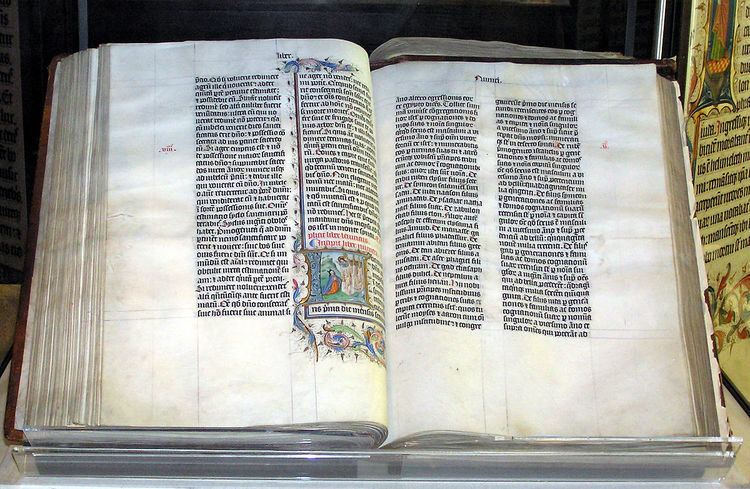 | ||
The Third Great Awakening refers to a hypothetical historical period proposed by William G. McLoughlin that was marked by religious activism in American history and spans the late 1850s to the early 20th century. It affected pietistic Protestant denominations and had a strong element of social activism. It gathered strength from the postmillennial belief that the Second Coming of Christ would occur after mankind had reformed the entire earth. It was affiliated with the Social Gospel Movement, which applied Christianity to social issues and gained its force from the Awakening, as did the worldwide missionary movement. New groupings emerged, such as the Holiness movement and Nazarene movements, and Christian Science.
Contents
The era saw the adoption of a number of moral causes, such as the abolition of slavery and prohibition. However, some scholars, such as Kenneth Scott Latourette, dispute the thesis that the United States ever had a Third Great Awakening.
Overview
This article focuses on the Awakening that took place during the nineteenth century in America. So far, it also includes material about Korea. A similar Awakening took place in Britain, identified by J Edwin Orr as starting in 1859 with its influence continuing through to the end of the century, impacting significantly on church growth, overseas mission, and social action.
The American Protestant mainline churches were growing rapidly in numbers, wealth and educational levels, throwing off their frontier beginnings and becoming centered in towns and cities. Intellectuals and writers such as Josiah Strong advocated a muscular Christianity with systematic outreach to the unchurched in America and around the globe. Others built colleges and universities to train the next generation. Each denomination supported active missionary societies, and made the role of missionary one of high prestige.
The great majority of pietistic mainline Protestants (in the North) supported the Republican Party, and urged it to endorse prohibition and social reforms. See Third Party System.
The awakening in numerous cities in 1858 was interrupted by the American Civil War. In the South, on the other hand, the Civil War stimulated revivals, especially the Confederate States Army revival in General Robert E. Lee's army.
After the war, Dwight L. Moody made revivalism the centerpiece of his activities in Chicago by founding the Moody Bible Institute. The hymns of Ira Sankey were especially influential.
Across the nation drys crusaded in the name of religion for the prohibition of alcohol. The Woman's Christian Temperance Union mobilized Protestant women for social crusades against liquor, pornography and prostitution, and sparked the demand for woman suffrage.
The Gilded Age plutocracy came under sharp attack from the Social Gospel preachers and with reformers in the Progressive Era. Historian Robert Fogel identifies numerous reforms, especially the battles involving child labor, compulsory elementary education and the protection of women from exploitation in factories.
All the major denominations sponsored growing missionary activities inside the United States and around the world.
Colleges associated with churches rapidly expanded in number, size and quality of curriculum. The promotion of "muscular Christianity" became popular among young men on campus and in urban YMCA's, as well as such denominational youth groups such as the Epworth League for Methodists and the Walther League for Lutherans.
New religions
Mary Baker Eddy introduced Christian Science, which gained a national following. In 1880, the Salvation Army denomination arrived in America. Although its theology was based on ideals expressed during the Second Great Awakening, its focus on poverty was of the Third. The Society for Ethical Culture was established in New York in 1876 by Felix Adler attracted a Reform Jewish clientele. Charles Taze Russell founded the Bible Students movement, which later split into the "Jehovah's Witnesses" of today.
With Jane Addams's Hull House in Chicago as its center, the settlement house movement and the vocation of social work were deeply influenced by the Social Gospel.
The New Thought movement expanded as Unity and Church of Divine Science were founded.
The Holiness and Pentecostal movements
The goal of the Holiness movement in the Methodist Church was to move beyond the one-time conversion experience that the revivals produce, and reach entire sanctification. The Pentecostals went one step further, seeking what they called a "baptism in the spirit" or "baptism of the Holy Ghost" that enabled those with this special gift to heal the sick, perform miracles, prophesy, and speak in tongues.
Impact on Korea
Chun Beh Im (2000) compared the evangelistic method and results of the Third Great Awakening in America with the Korean revivals of 1884–1910. Many techniques of the Second and Third Great Awakenings were transposed from America to Korea, including the circuit-riding system of the Methodists, the Baptist farmer preachers, the campus revivals of the eastern seaboard, the camp meetings in the West, the new measures of Charles G. Finney, the Layman's Prayer Revival, urban mass revivalism of D. L. Moody, and the Student Volunteer Movement. Im discovered four areas of influence from a comparison and analysis of the two countries' revivals: the establishment of tradition, the adoption of similar emphases, the incorporation of evangelistic methodologies, and the observation of the results of the revivals. The American revivals had a major influence on the Korean revivals, and the American revival tradition and enthusiasm toward missions helped Korean Christians develop their own religious experience and tradition. This tradition has influenced Korean churches even into the 21st century.
